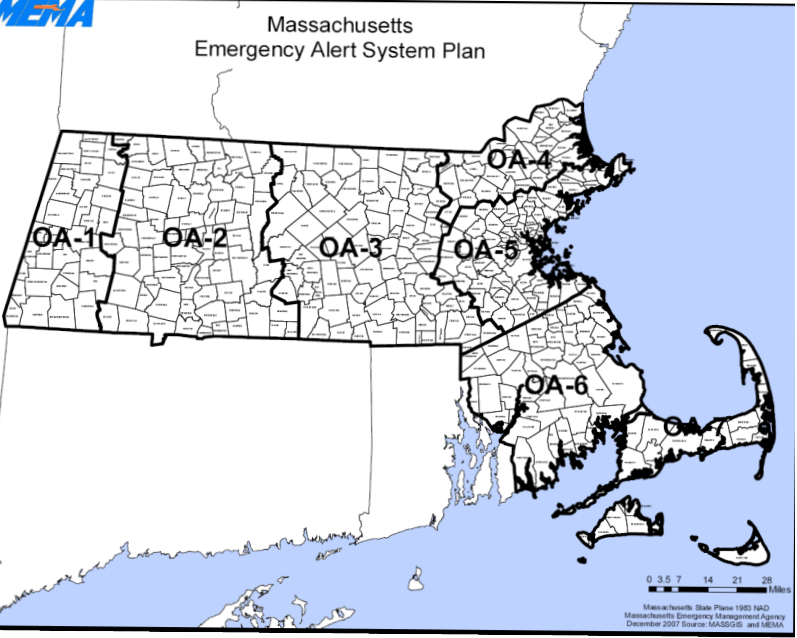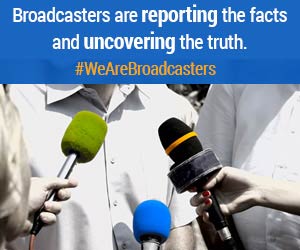
Those trying to keep up with the news surrounding the upcoming nationwide test of the Emergency Alert System (“EAS”) know that a lot has been happening in a short period of time. Below, we pull together the many recent FCC actions regarding EAS in one place for ease of reference.
Let’s start with the basics. The FCC announced that the nationwide test will take place on Wednesday, September 28, 2016, at 2:20 pm Eastern Time, and that, if necessary, the secondary test date will be October 5, 2016. The test will start when FEMA sends the alert message, which will be in both English and Spanish. As we wrote last year, the alert will use a new nationwide test event code, NPT, and a new nationwide geographic zone code, 000000. As of July 30, 2016, all EAS Participants were required to have equipment in place capable of receiving and passing these codes. Irritated viewers and listeners will be pleased to know that the test will last less than a minute.
Next, all EAS participants must submit three forms to the FCC regarding the test. Unlike the last nationwide test, which took place in November 2011, participants must make these filings online through the EAS Test Reporting System (ETRS), and do not have the option of filing paper copies. Note that FM Translators, FM Boosters, LPTVs that operate as translators, satellite stations that rebroadcast all of a main station’s programming, and international stations do not have to file.
The first form, aptly named Form One, is a registration form that identifies the participant, and must be filed by August 26, 2016. Participants then have until September 26, 2016, to “update or correct any errors” in the Form One. This does NOT mean that you can wait until September 26th to complete and file the Form One. According to senior FCC staff, participants that do not register by August 26th will be deemed out of compliance—the purpose of the extra month is only to allow for cleaning up minor errors.
Information regarding the registration process can be found in this June 27, 2016 Public Notice, and more detailed instructions with screenshots on how to fill out all three forms can be found in this April 18, 2016 Public Notice. You can also contact the FCC for assistance at ETRS@fcc.gov.
But there are a few things to be aware of when you register, as ETRS has caused aggravation among many using the system. First, the “Geographic Zone of Service” field will not necessarily prepopulate with a correct list of geographic zones unless other participants have already added those to the system. Participants will need to consult their state EAS plan to find the correct geographic zone to list, and may have to choose the “add” option to add that zone to the system if it does not appear as an option in the drop-down list. While this step tripped up a lot of early registrants, who then just made up the area they felt they served (e.g., listing the “tri-state area” rather than “EAS Zone 10”), a number of the state broadcasters associations have been working with the FCC to prepopulate the system with the correct EAS zones for their state. [See list and map of MA EAS Zones below]
Second, if you filled out the registration form between June 27, 2016, when ETRS became operational, and July 8, 2016, you should go back and double check that your coordinates are correct in the “Latitude” and “Longitude” fields. Some of the coordinates are prepopulated by the system, and for a time the system was relying on incorrect location data. So if you get an error message about your coordinates being wrong, that might be the source of your problem.
Third, don’t sweat the “Tasks” feature too much. It probably seemed like a neat feature to have when the system was being designed, but the execution leaves something to be desired. It tends to be more confusing than helpful, generating a new “to do” item every time you sign in. As a result, it is not uncommon to have four duplicates of the exact same task listed, such as “File Your Form One.”
Once September 28, 2016 rolls around and the test has (hopefully) occurred, participants have only a few hours to file Form Two, Day of Test Reporting, which is comprised of “day of test” information, and is due before 11:59 pm Eastern Time on the same day as the test itself. This gives participants less than 10 hours after the test to file Form Two, which has raised some eyebrows. The relevant FCC rule says that participants must file “within 24 hours . . . or as otherwise directed” by the FCC. No explanation has been provided as to why participants were given significantly less than 24 hours to file, but one must imagine that the FCC is confident that filing Form Two will be a snap, and that ETRS can handle the load of all participants using the system at the same time.
Form Three, Detailed Test Reporting, which is comprised of more detailed post-test questions, must be filed on or before November 14, 2016 using the ETRS.
In addition to the nationwide test, there continue to be other developments which EAS participants need to know about. At the request of the National Weather Service, the FCC last month added three new EAS event codes and slightly revised the territorial boundaries for two of its location codes. EAS uses three-character event codes to describe the nature of the alert (e.g. “TOR” for tornado), and six-digit location codes to identify the geographic area(s) to which an alert applies.
The three new codes are designed to alert the public to extreme wind and storm surge conditions in the days and hours ahead of a hurricane making landfall, when appropriate preparations can be made and loss of life is most preventable. The first of the three new event codes is “Extreme Wind Warning” (EWW), which the National Weather Service has used for years but which was not an official EAS code. As a result, other warning codes have been used in high wind scenarios, causing incorrect risk avoidance advice to be disseminated. The remaining two codes relate to storm surge. “Storm Surge Watch” (SSA) is to be used 48 hours in advance of a storm surge and “Storm Surge Warning” (SSW) is to be used 36 hours in advance. The two location code modifications apply to location codes 75 and 77, which correspond to offshore marine areas in the Atlantic and the Gulf of Mexico. The modifications move the end points for both zones from Bonita Beach, Florida to Ocean Reef, Florida and are considered important to the efficiency and safety of marine operations. More information about these changes can be found in a July 11, 2016 FCC Order.
EAS equipment manufacturers are required to integrate the new event codes and location codes into equipment yet to be made or sold, and to offer software upgrades for existing equipment, no later than six months from the effective date of the rule amendments. The effective date of those new rules will be 30 days after publication of the rule amendments in the Federal Register, which has not yet occurred.
While use of these new codes is voluntary, EAS participants in coastal areas will be highly motivated to install upgrades to their existing equipment once those are made available by equipment manufacturers. The manufacturers indicated to the FCC that in many cases the upgrade can be accomplished easily through a software update the manufacturers will release. EAS participants have the option of electing precisely when to implement those upgrades. However, beginning one year after the effective date of the new rules, any EAS participant that replaces its equipment must do so with equipment that is capable of complying with the new codes (i.e., no purchasing used equipment that does not comply). Given the pace of EAS changes and fixes such as these, broadcasters and other EAS participants should remain alert for notifications from their equipment manufacturers reflecting when software updates or equipment upgrades become available.
While August is often a slow time for many, the increasing number of terrorist attacks around the globe has put the federal government on a fast track for ensuring the functionality of EAS in an emergency. That urgency is now being relayed to broadcasters and other EAS participants who are at the front lines of the effort to quickly notify the public of emergency information. For those charged with maintaining and operating EAS equipment, the next two months will be busy ones.
MA EAS Operational Areas
| MEMA
Op Area |
Geo Area | Primary Assignment | Secondary Assignment | Optional
Assignment |
Local Primary Monitors |
| OA-1 | Berkshire | WBEC-FM | WHYN-FM | NOAA (Albany) | WHYN-FM, Albany Station, NOAA(Albany) |
| OA-2
|
Connecticut Valley | WHYN-FM | WSRS-FM | NOAA | WSRS-FM, WBZ-AM, NOAA |
| OA-3 | Central Massachusetts | WSRS-FM | WBZ-AM or WBZ-FM | NOAA | WBZ-AM & WBZ-FM, NOAA |
| OA-4 | Merrimac Valley | WEEI-FM | WBZ-AM or WBZ-FM | NOAA | WBZ-AM & WBZ-FM, NOAA |
| OA-5
|
Metro Boston | WBZ-AM | WBZ-FM | NOAA | WBZ(AM or FM), NOAA |
| OA-6 | Southeast Massachusetts | WPLM-FM | WBZ-AM or WBZ-FM | NOAA | WBZ-AM AND WBZ-FM, NOAA |
| OA-7
|
Cape and Islands | WQRC-FM | WPLM-FM | NOAA | WPLM-FM, WBZ-AM or WBZ-FM, NOAA |





